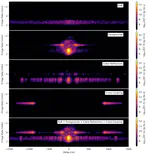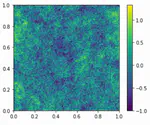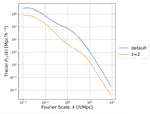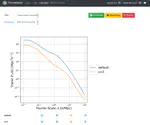Code
matvis is a visibility simulator: it computes what an interferometer (like HERA)
would measure given a model of the sky. This process is incredibly computationally
demanding for telescopes like HERA that have several hundred antennas (and, more
importantly, several tens of thousands of pairs of antennas). matvis adopts a novel
matrix-based approach to the computation that gets significant acceleration from modern
GPUs. The original author of this code was Aaron Parsons. I have been the primary
maintainer and performance-enhancer in recent times.TheHaloMod is a web-application that uses my Python codes hmf and halomod to calculate halo model quantities, and serve up plots directly without ever having to install the codes, from the comfort of your web browser.
The purpose of TheHaloMod is to be useful both for researchers and also students approaching
research into large-scale structure. TheHaloMod was formerly known as HMFcalc,
and has been well-used since its creation in 2013. TheHaloMod adds extra goodies to
the original HMFcalc — namely, the ability to calculate correlation functions and
power spectra of galaxies.
From June 2021, TheHaloMod has become a shiny new single-page app, developed by a very talented group of Computer Science undergrads at ASU.
A python application that provides a flexible and simple way to calculate the Halo Mass Function for a range of varying parameters.
The Halo Mass Function is a critical quantity in determining properties of the large-scale structure of the Universe. It encodes the number of halos of a given mass in a given volume of the Universe, and can be predicted from some neat arguments given a cosmology that describes how the Universe is expanding. The predictions can be used to compare to observations of galaxy clusters to determine parameters of the large scale structure. The HMF is also a key ingredient in more complex predictions of the Universe, via the halo model.





